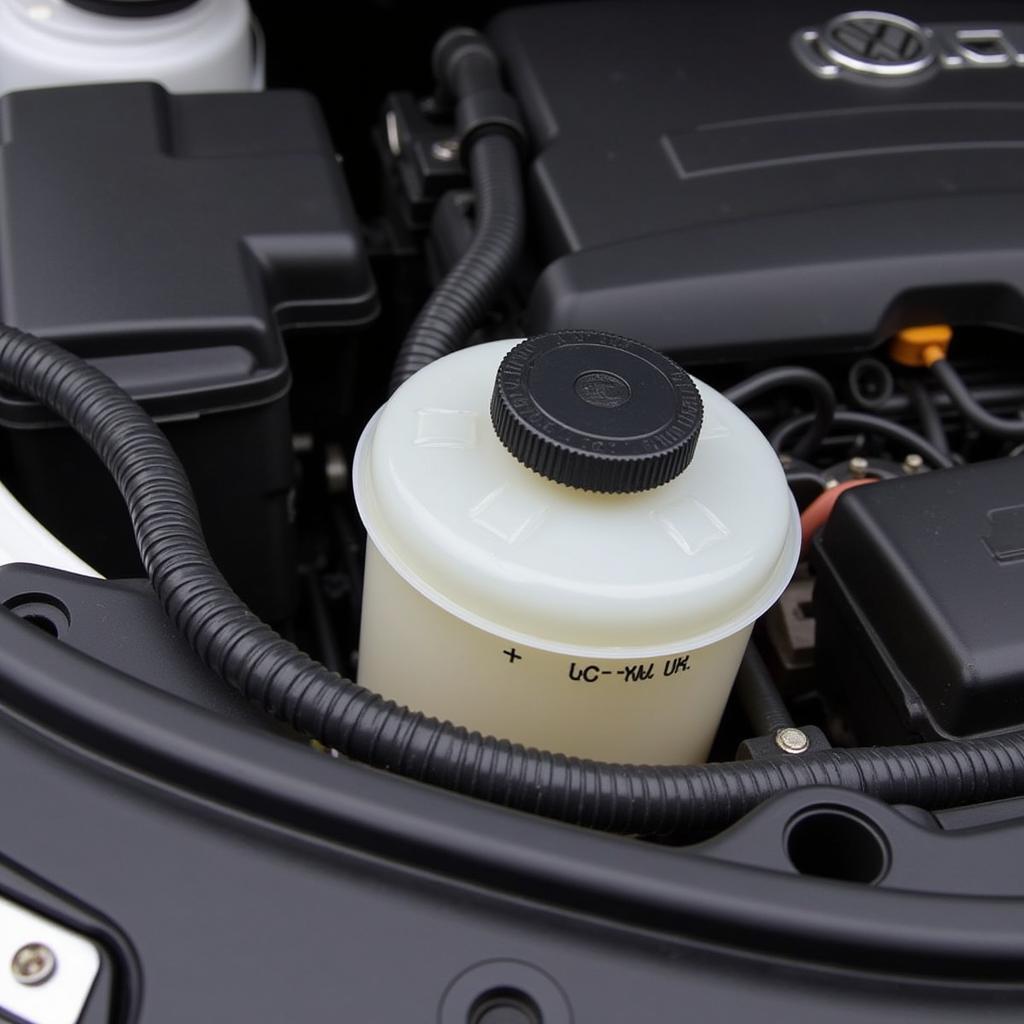When you see an AdBlue level warning on your vehicle’s dashboard, it’s essential to understand the problem and know how to address it effectively. AdBlue, also known as DEF (Diesel Exhaust Fluid), is a crucial component in modern diesel vehicles that helps reduce harmful emissions.
This article will delve into the reasons behind AdBlue level warnings, explore the potential consequences of ignoring them, and provide you with practical steps to troubleshoot and resolve the issue. We’ll also address common questions regarding AdBlue, its importance, and its impact on your vehicle’s performance.
What is AdBlue and Why is it Important?
AdBlue is a non-toxic, non-flammable solution that’s primarily made up of urea and deionized water. It’s injected into the exhaust system of diesel vehicles, where it reacts with nitrogen oxides (NOx) to break them down into harmless nitrogen and water vapor. This process helps significantly reduce harmful emissions that contribute to air pollution and climate change.
Understanding the AdBlue Level Warning
An AdBlue level warning indicates that your vehicle’s AdBlue tank is running low or has become depleted. The warning light typically looks like a blue tank symbol with an exclamation mark inside. Once the warning light illuminates, you have a limited amount of time to replenish the AdBlue before your vehicle’s performance is affected.
What Happens if You Ignore the AdBlue Level Warning?
Ignoring the AdBlue level warning can lead to several negative consequences:
- Reduced Performance: The vehicle’s engine control unit (ECU) will limit engine power to protect the catalytic converter from damage. This will result in a noticeable decrease in performance, especially at higher speeds.
- Engine Restrictions: The vehicle’s engine may even refuse to start once the AdBlue tank is completely empty.
- Costly Repairs: Leaving the AdBlue tank empty for an extended period can lead to permanent damage to the exhaust system, resulting in costly repairs.
Common Causes of AdBlue Level Warnings
The most obvious cause of an AdBlue level warning is a low or empty AdBlue tank. However, there are other factors that can trigger this warning:
- AdBlue System Faults: The AdBlue system includes sensors, pumps, and other components that can malfunction. If a fault occurs in the AdBlue system, it can trigger a warning light even if the tank has sufficient AdBlue.
- Faulty Sensor Readings: The sensor responsible for monitoring the AdBlue level might not be working properly, leading to inaccurate readings and a false warning.
- AdBlue Contamination: If the AdBlue tank is contaminated with foreign substances, it can affect the system’s performance and trigger a warning.
Resolving the AdBlue Level Warning
The first step to resolving an AdBlue level warning is to check the AdBlue tank level. If the tank is low, simply refill it with fresh, high-quality AdBlue solution. You can find AdBlue at most automotive stores and service stations.
If the AdBlue tank is full and the warning light remains on, it’s likely there’s a problem with the AdBlue system. Here are some troubleshooting tips:
- Check for Leaks: Visually inspect the AdBlue system for any leaks. Look for any signs of AdBlue dripping from the tank, hoses, or connectors.
- Check Sensor Function: Use a diagnostic tool to check the sensor readings and ensure the AdBlue level sensor is working correctly.
- Check for Faults: Use a diagnostic tool to scan the AdBlue system for any stored fault codes. These codes can provide valuable information about the cause of the problem.
- Consult a Professional: If you’re unable to identify the problem or resolve it yourself, consult a qualified automotive technician. They can diagnose the issue and perform any necessary repairs.
Frequently Asked Questions About AdBlue
1. How often should I refill my AdBlue tank?
The frequency of AdBlue refills depends on your driving habits and the size of your AdBlue tank. On average, most drivers need to refill their AdBlue tanks every 500-1000 miles.
2. Is it safe to mix different brands of AdBlue?
Yes, it’s generally safe to mix different brands of AdBlue as long as they meet the ISO 22241-1 standard. However, it’s best to use the same brand of AdBlue whenever possible.
3. What are the benefits of using AdBlue?
AdBlue significantly reduces NOx emissions, which improves air quality and helps protect the environment. It also helps prevent damage to the exhaust system and enhances engine performance.
4. What happens if I run out of AdBlue?
If you run out of AdBlue, your vehicle’s engine control unit (ECU) will limit engine power to protect the catalytic converter from damage. In some cases, the engine may even refuse to start.
5. Can I add water to my AdBlue tank?
Adding water to your AdBlue tank is not recommended as it can dilute the solution and affect its effectiveness.
6. How much does AdBlue cost?
The price of AdBlue varies depending on your location and the retailer. However, it’s generally a relatively inexpensive solution compared to the potential cost of repairs if the AdBlue system fails.
Conclusion
An AdBlue level warning shouldn’t be ignored. Promptly addressing this issue will help maintain your vehicle’s performance, protect the exhaust system, and ensure you stay compliant with emissions regulations. By understanding the basics of AdBlue and following the tips provided in this article, you can effectively troubleshoot and resolve AdBlue-related issues. Remember, if you’re uncertain about any aspect of the AdBlue system, consult a qualified automotive technician for professional assistance.

